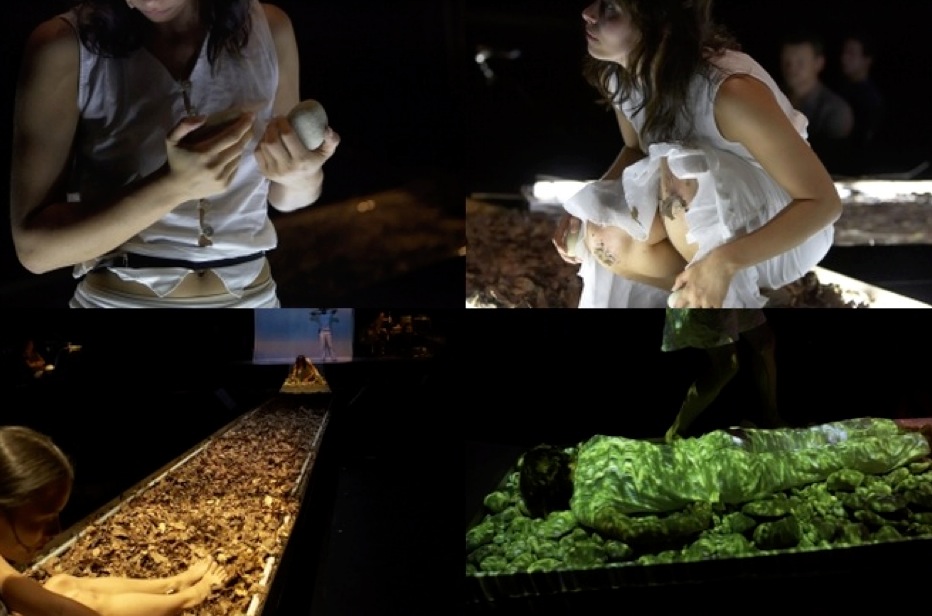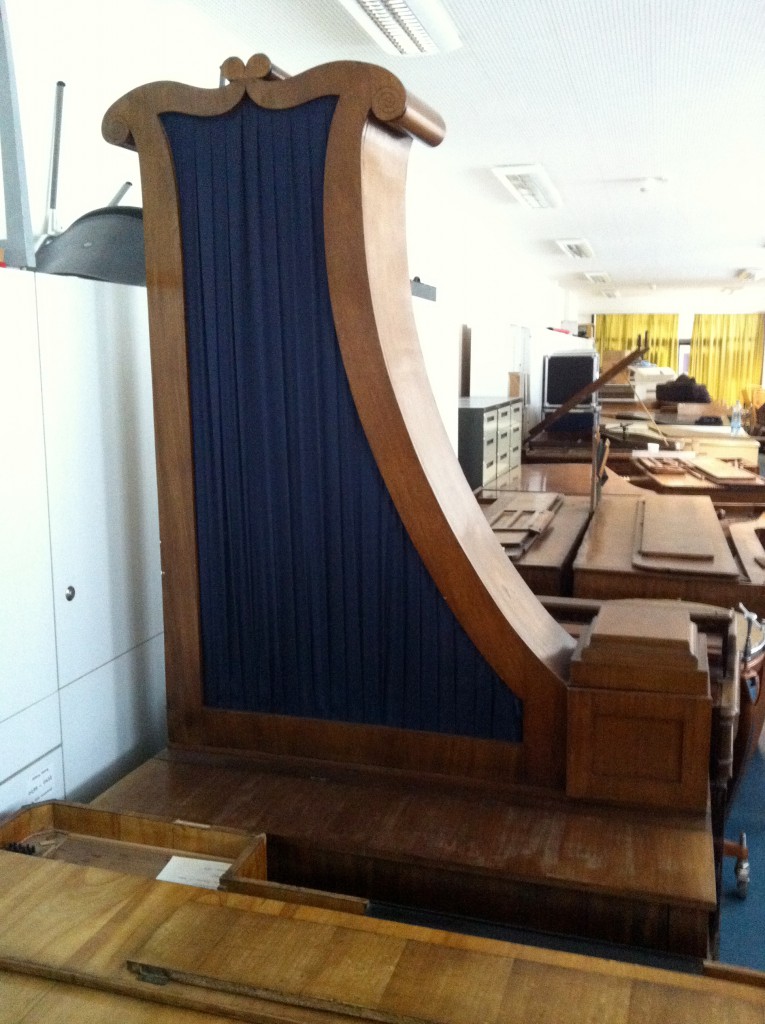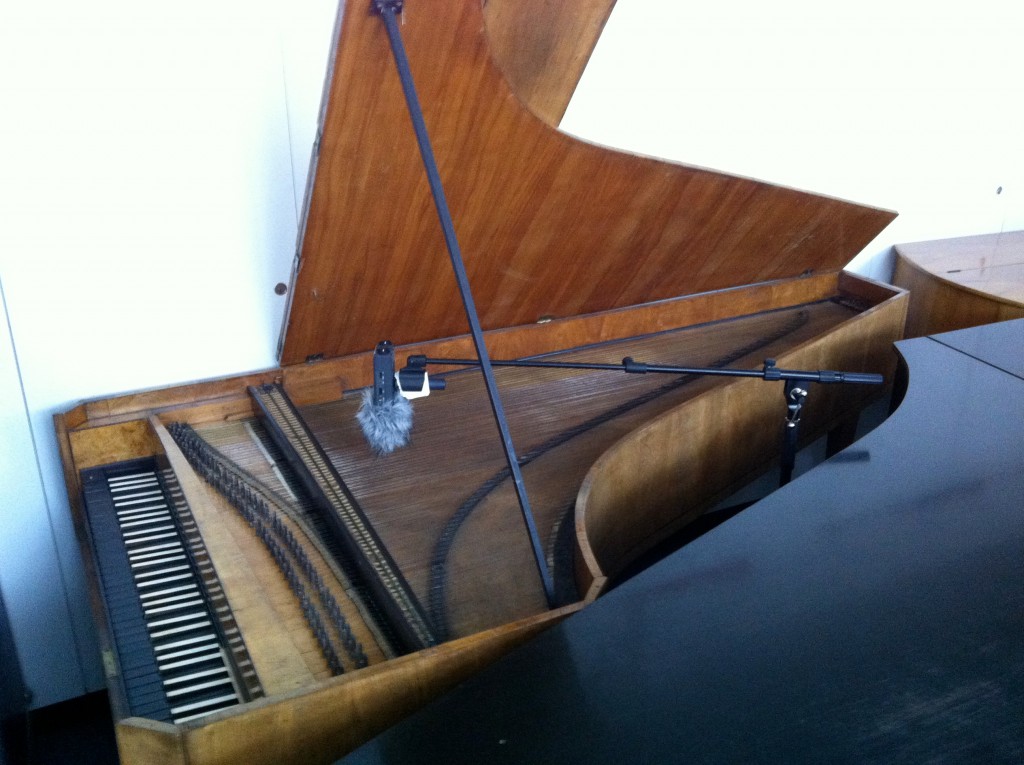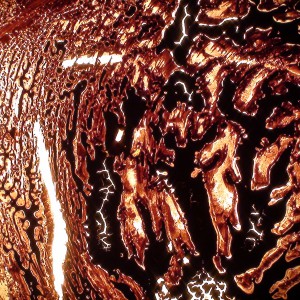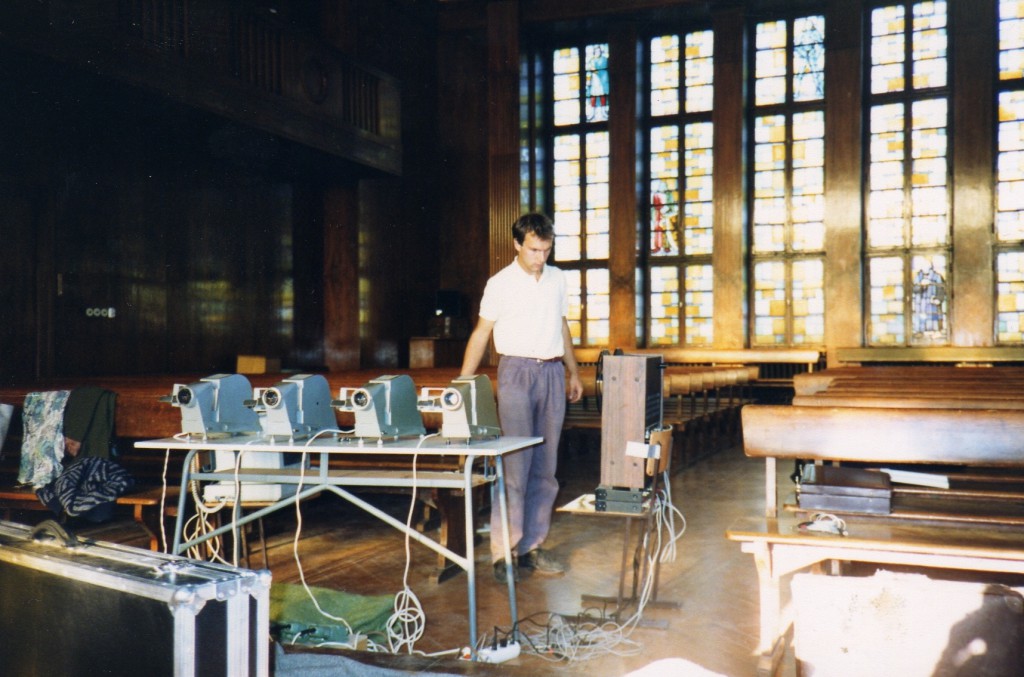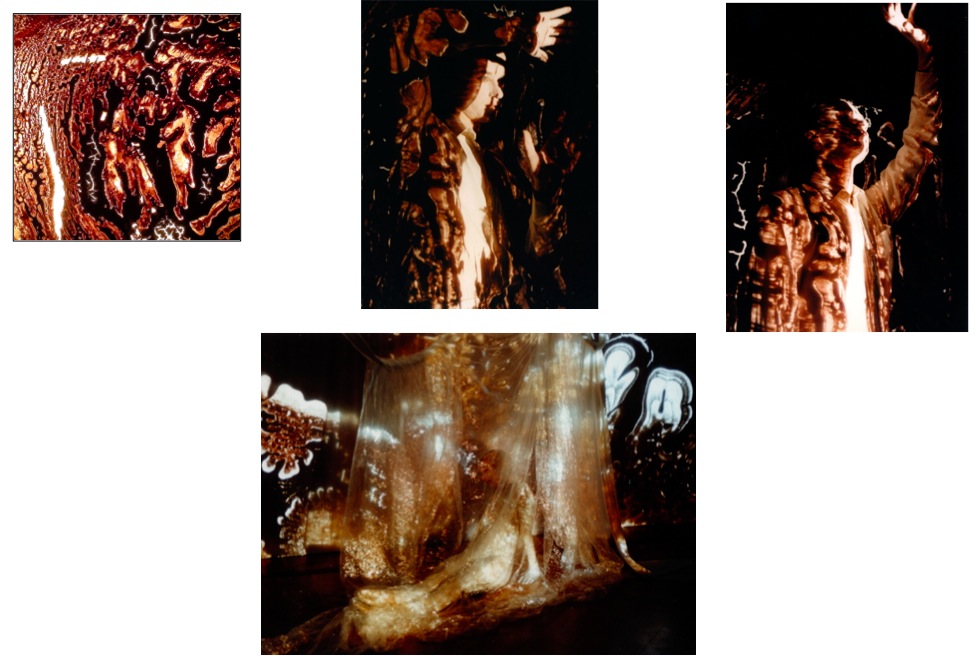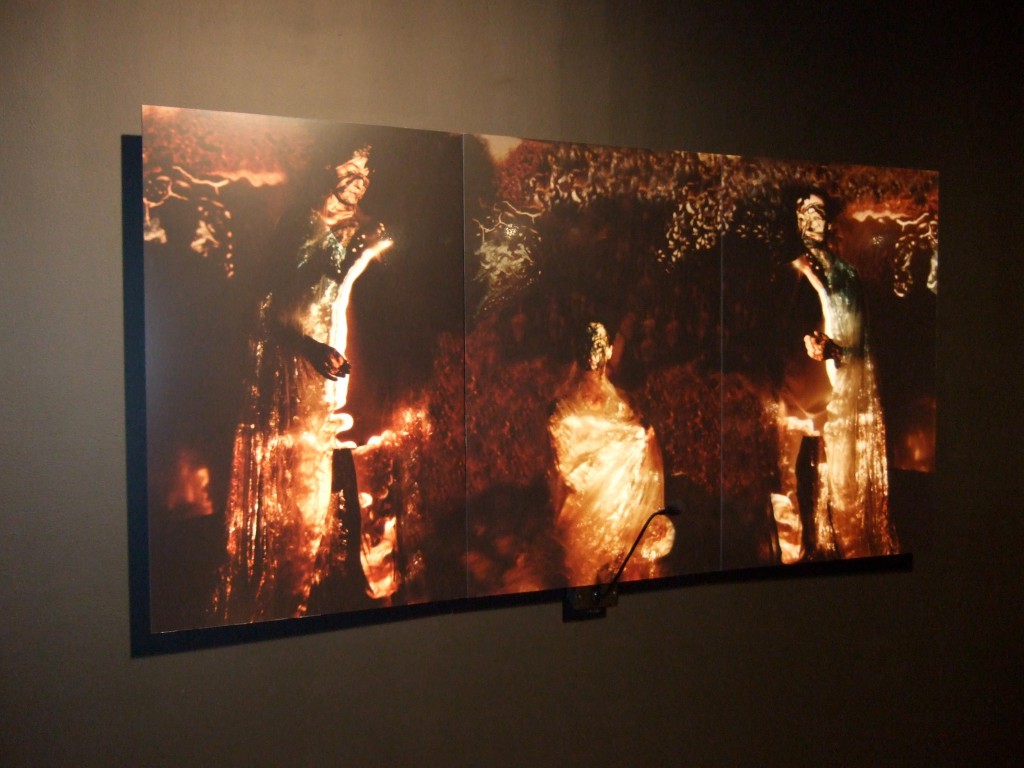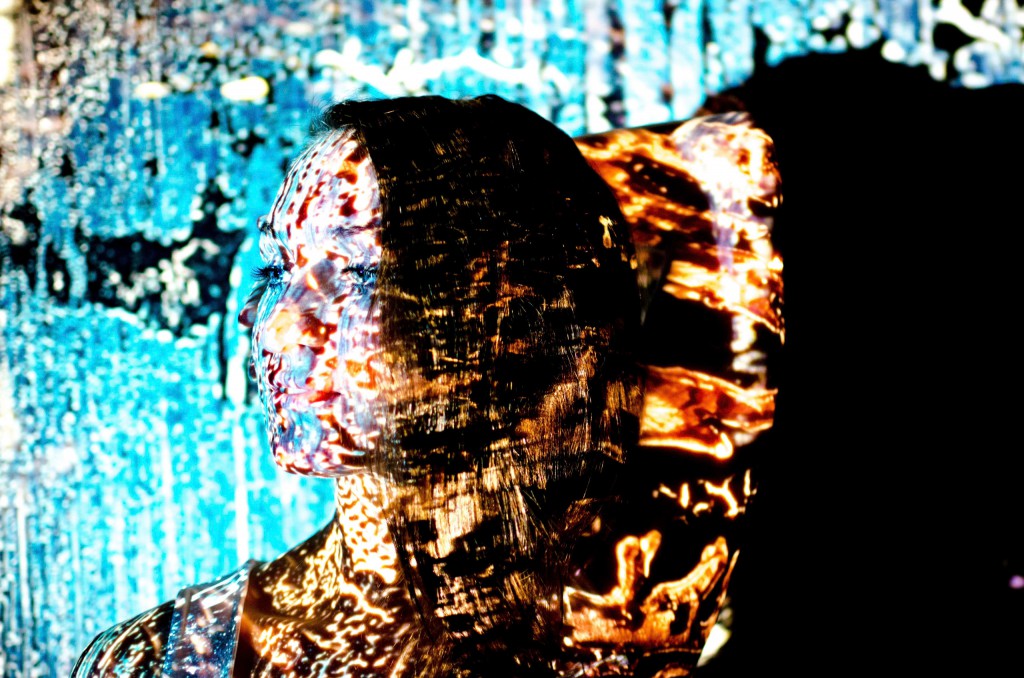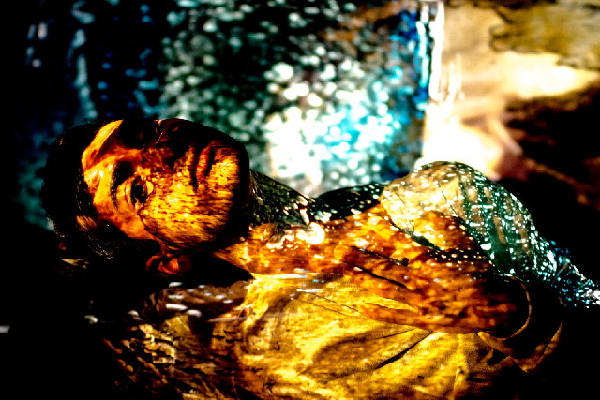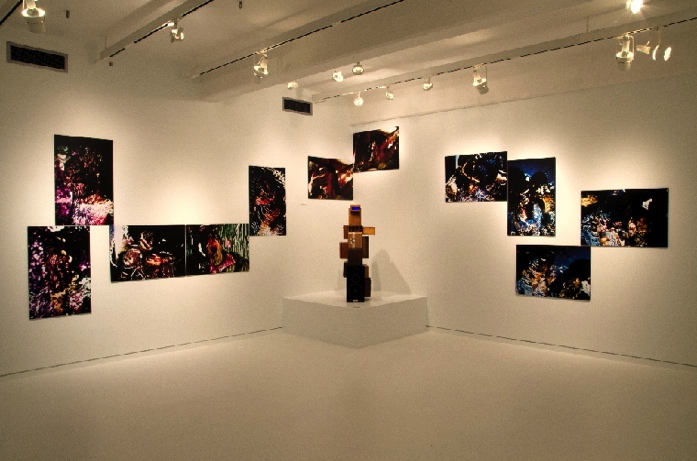I now turn to some other examples for my use of gesture. In 2005, I wrote the chamber opera “Die Süsse unserer traurigen Kindheit” on poems and letters of expressionist Georg Trakl.
Apart from two sopranos, five instruments, electronics in 16 channels and 4 video projections, there is also a dancer.
In the 1990s, I worked with dancers and we also experimented with motion sensors. But, the results did not convince me. It is not because I can technically trace movements of arms and legs that I obtain a guarantee for a gestural link. For me there is a difference between an instrumental gesture, which is functional and the gesture of a dancer which is expressive in itself. The movements to play a musical instrument are not beautiful, but they are related to the operation of the instrument. In contrast, the gesture of a dancer is originating in the center of the body and does not follow a function. To request from a dancer to produce gestures to trigger sound events or to control parameters did not satisfy me. I used therefore a wireless microphone near his mouth to catch his breath, naturally connected with his actions. The dancer had no added mental gymnastics to perform, he could just express himself as usual. It was very interesting as the breath also gives us information about the quality of the preparation of a movement.
In this chamber opera, there is a solo dance, and the singers are silent. All electronic sounds are generated and controlled by the breath of the dancer. During the sequence I am looking for a changing relationship. There are moments where the link is very clear. But I don’t want it to become too obvious, otherwise it becomes a demonstration of technology. ‘Integration’ and ‘confusion’ are very active thought models here and I use variations in the way how the microphone effects the electronics over time.
The dance solo with Hans Georg Lenhart:
The gesture in my sound recordings
I will now give some examples of gesture in sound recordings for my electroacoustic works. I’m no longer interested in recording a single sound. I develop musical phrases with the sounding body in question. It starts with an exploration of the possibilities, and soon I develop phrases that I try to realize as precise as I can.
A pianist interpreting a written score develops a mental image of a given phrase and compares it to what he is actually playing. He repeats the phrase during his rehearsals to approach that image – and sometimes – changes the mental image to improve the musical result. I try to get into this rehearsal loop and make several realizations of the idea until I approach what I had envisioned.
‘Klaviersammlung’, an electroacoustic composition you’ll hear at tonight’s concert, is based on the sounds of a piano collection from the Musicology Department at the University of Cologne. They are all in a deplorable state. I have recorded five instruments, especially playing inside, sometimes using glasses on the strings.
This particular piano is interesting because the ‘unused’ part of the string between the peg and the bridge is very long, compared with a modern piano where it is short and very tense. Here, this part of the string sounds a lot, but with a completely different tuning.
This video shows one of those sound recordings:
The following four sounds demonstrate some of my approaches with these playing sequences. These are the original recordings, without any treatment.
Circular scratch:
Rhythmic structure:
Densification: a rattling bass string:
The following sequence has become the theme of the composition. It is a glissando and with each repetition during recording I choose different pitches on the last notes.
The idea of variation is very dear to me. One advantage of the way to record my playing sequences is that I get naturally many variations of the same musical idea. If I want to repeat the same sound structure in the composition, I choose another recording, instead of reusing the same sample. Sometimes I directly use them as temporal evolution. Sometimes I mix them for complex textures, where all components follow the same general evolution.
Other art forms
I now turn to some examples in other art forms, in which I could explore the relationship with technology. They are not isolated from my musical practice because everything is interconnected. I see the work in these different fields as separate realizations of the same artistic sensibility.
Here, you see a painting of oil on glass that I realized in 1984. By putting a strong light source behind, I get pictures with great contrasts.
I built a system of four slide projectors, superimposing their images, with intensity sliders to play them manually. In the comings and goings of the images, this created an abstract space in slow modulation, projected onto a dancer on stage.
We played the piece ‘Klang-Farbe-Bewegung’ for dance, ensemble, and projection often in Europe. The structure is based on scenes and stories with a certain freedom of improvisation for slide transitions, movements, and music.
In 2009 I created a new version, where the projection is now realized with six videos.
Polyvision, for dance, ensemble and video (2009)
Dance – Hans Georg Lenhart
Ensemble für Intuitive Musik Weimar
Trumpet – Daniel Hoffmann
Violoncello – Matthias von Hintzenstern
Piano – Michael von Hintzenstern
Electronics – Hans Tutschku
During a rehearsal in the 1990th, I began to take photographs of the dancer in the projection. The result was a new expressive mode with frozen time. These photos became communication-objects with the public in further works.
In 2007 I transformed them into interactive sound installations, where the photos themselves become speakers by sticking transducers on their back. Each installation has an integrated microphone.
The visitor is invited to speak, sing, etc., and hears his voice transformed and blended with pre-composed sounds. There are a total of eight of these objects, each offering a different relationship between the action and the transformed voice sounds. In contrast to concert pieces I was looking for personalized experiences for each visitor.
In 2013 I realized a new series of photos with dance students at Harvard.
There is no digital processing like ‘Photoshop’, all images are simply the projection of my paintings onto the body.
For the exhibition ‘The other side’ (2014), the photos were grouped into spaced arrangements and combined with two interactive sound sculptures.

